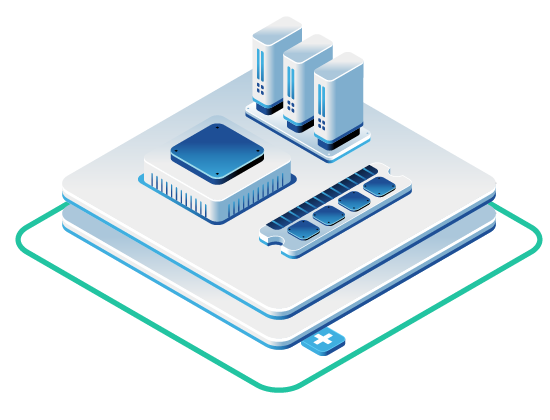In this article
Asynchronous replication is a data protection method used in OpenStack environments where data is copied to a secondary location after the initial write operation is confirmed on the primary site. This approach prioritizes application performance and network flexibility over immediate data consistency between sites. It’s a good fit when you can tolerate a small potential data gap (measured in seconds or minutes) between your primary and secondary storage in exchange for speed and lower overhead.
Let’s look at why and when you might choose this replication style for your OpenStack cloud.
How OpenStack Services Support Asynchronous Replication
Several core OpenStack services can work with asynchronous replication, typically relying on backend storage capabilities or built-in features:
- Cinder (Block Storage): Many Cinder storage drivers (like Ceph RBD, LVM, and various vendor-specific plugins) support asynchronous volume replication. This often includes features like managing replication relationships, initiating failover/failback, and sometimes grouping volumes for consistent replication (consistency groups).
- Swift (Object Storage): Swift’s architecture naturally uses an “eventual consistency” model. Data replicas are written across different nodes or even regions asynchronously. Swift includes mechanisms for self-healing and ensuring data integrity over time across these replicas.
Main Advantages of Asynchronous Replication
1. Improved Application Performance
Because write operations are acknowledged locally on the primary storage system almost immediately, without waiting for confirmation from the remote site, applications experience lower latency and higher throughput.
- Reduced Write Latency: Applications don’t pause waiting for data to travel across the network and be written remotely.
- Increased Throughput: The primary storage system can handle more simultaneous write requests since it’s not bottlenecked by the replication link speed or remote site performance. This is particularly noticeable during high-traffic periods or when replicating data over long distances (high latency networks).
These performance benefits can lead to a snappier user experience and allow systems to handle larger workloads.
2. Potential Cost Savings and Efficient Resource Use
Asynchronous replication can be less demanding on network bandwidth and potentially require less expensive hardware compared to synchronous solutions that need high-speed, low-latency links.
- Bandwidth Flexibility: Data transfers can often be scheduled or throttled, allowing you to use less bandwidth during peak production hours and more during off-peak times.
- Storage Efficiency: While you still need secondary storage, the less stringent network requirements might allow for more geographically distant or cost-effective secondary sites.
- Resource Management: You have more control over when replication traffic occurs, helping manage network load.
When planned well, this approach can lead to big savings on networking infrastructure and potentially operational costs compared to synchronous methods, especially for disaster recovery scenarios over long distances.
3. Flexible Backup and Recovery Options
Asynchronous replication provides a solid foundation for disaster recovery (DR) and backup strategies, particularly when geographic separation is needed.
- Point-in-Time Recovery: Replication mechanisms often work alongside snapshot features, allowing you to recover data from a specific consistent point in time on the secondary site.
- Disaster Recovery Site: It enables maintaining an up-to-date (within the Recovery Point Objective) copy of data at a remote location, ready for failover if the primary site becomes unavailable.
- Adjustable RPO: You can often configure the replication process to balance data freshness (how recent the replicated data is) against network usage, defining an acceptable Recovery Point Objective (RPO) – the maximum amount of data you’re willing to lose in a disaster.
This helps build resilient OpenStack deployments without heavily impacting primary site operations.
Common Asynchronous Replication Use Cases
- Disaster Recovery (DR) Sites: Setting up geographically separate backup sites to meet business continuity and compliance needs. Asynchronous replication is often the practical choice for DR over WAN links due to latency.
- Large-Scale Data Migration/Mobility: Moving large volumes of data between OpenStack regions or different storage systems without impacting production applications during the transfer.
- Feeding Secondary Workloads: Replicating production data to a secondary site for non-critical tasks like running analytics, testing/development, or populating content delivery networks (CDNs), without putting extra load on the primary systems.
Setting Up Replication (Conceptual Examples)
Important Note: Configuration details vary significantly based on the specific OpenStack service, the backend storage driver, and the software versions you are using. Always consult the official documentation for your specific components.
Example: Swift Object Storage (Conceptual)
Swift uses eventual consistency internally. For cross-region replication, you might configure container sync:
- Ensure Network Connectivity: Your Swift clusters in different regions must be able to communicate.
- Configure Container Sync: In
swift.confor specific proxy/container server configurations, you enable and configure the container-sync feature, specifying the destination cluster and authentication details.[container-sync] # Configuration options for syncing containers between clusters - Set Container Headers: Use Swift API calls (e.g.,
swift post) to set special headers (X-Container-Sync-To,X-Container-Sync-Key) on the containers you want to replicate.
Swift’s internal processes (container-syncdaemon) will then handle replicating objects asynchronously to the specified destination.
Example: Cinder Block Storage (Conceptual – Driver Dependent)
Setting up Cinder replication is highly dependent on the storage backend driver:
- Backend Configuration: Configure both primary and secondary storage systems according to the vendor’s replication documentation (e.g., setting up Ceph RBD mirroring, configuring LVM replication pairs, or enabling vendor hardware replication).
- Cinder Driver Configuration: Update the
cinder.conffile on your Cinder nodes. You’ll typically define multiple backend stanzas, one for the primary and one for the secondary, and specify replication parameters likereplication_devicepointing to the secondary backend configuration.[backend-primary] volume_driver = cinder.volume.drivers.your_driver.YourDriver # ... other primary config ... replication_device = backend_id:secondary-config,conf_file:/etc/cinder/cinder.conf [backend-secondary] volume_driver = cinder.volume.drivers.your_driver.YourDriver # ... other secondary config ... - Create Replication Type: Use the Cinder API/CLI (
cinder type-create,cinder type-key set) to define a volume type that enables replication. - Manage Replication: Use Cinder commands (
cinder replicate,cinder failover-host, etc.) to manage the replication status of volumes created with the replication-enabled type.
Addressing Common Challenges
Managing Replication Lag (RPO)
- Understand the Lag: Asynchronous replication means the secondary copy will always be slightly behind the primary. This lag is your effective RPO.
- Monitor: Actively monitor the replication lag. Most systems provide metrics for this.
- Set Alerts: Configure alerts if the lag exceeds your acceptable RPO threshold.
- Network Capacity: Ensure sufficient, stable bandwidth between sites. Network congestion is a primary cause of increased lag.
- Application Consistency: Be aware that the secondary site might not be transactionally consistent unless you use application-level quiescing or consistency groups (if supported by your Cinder driver).
Handling Failover and Failback
- Test Regularly: Practice your failover procedure to ensure it works and your team knows the steps.
- Clear Procedures: Have documented steps for failing over (promoting the secondary site) and failing back (resynchronizing with the primary site once it’s available).
- Data Integrity: Before failing over, verify data integrity on the secondary site if possible. After failback, ensure data is correctly synchronized.
Resource Consumption
- Bandwidth Management: Use Quality of Service (QoS) or built-in throttling features to manage bandwidth usage, especially during peak hours.
- Storage Capacity: Monitor storage consumption on the secondary site. Ensure it has enough space for the replicated data and any snapshots.
- Performance Impact: While designed to minimize impact, heavy replication can still consume resources (CPU, network IO) on both primary and secondary systems. Monitor system performance.
Wrapping Up – When to Use Asynchronous Replication in OpenStack Clouds
Asynchronous replication offers a practical balance between data protection, application performance, and cost in OpenStack clouds. It’s helpful for disaster recovery, data distribution, and supporting secondary workloads where near-instantaneous data consistency isn’t the absolute top priority. Success depends on understanding the trade-offs (especially RPO), careful planning, proper configuration based on your specific storage backend, and ongoing monitoring.
Planning and Operational Considerations
- Assessment:
- Define your RPO and Recovery Time Objective (RTO) needs.
- Assess network bandwidth and latency between potential sites.
- Plan for storage capacity at the secondary location.
- Implementation:
- Choose and configure the appropriate Cinder driver or Swift features.
- Set up replication according to documentation.
- Deploy monitoring tools to track replication lag, system health, and resource usage.
- Operation:
- Regularly monitor replication status and system performance.
- Test failover and failback procedures periodically.
- Manage bandwidth usage (e.g., scheduling, throttling).
- Automate health checks and alerts where possible.
- Consider starting with a pilot project before rolling out widely.
By carefully considering these points, you can effectively use asynchronous replication to make your OpenStack environment more resilient and flexible.
Schedule a Consultation
Get a deeper assessment and discuss your unique requirements.
Read More on the OpenMetal Blog


































